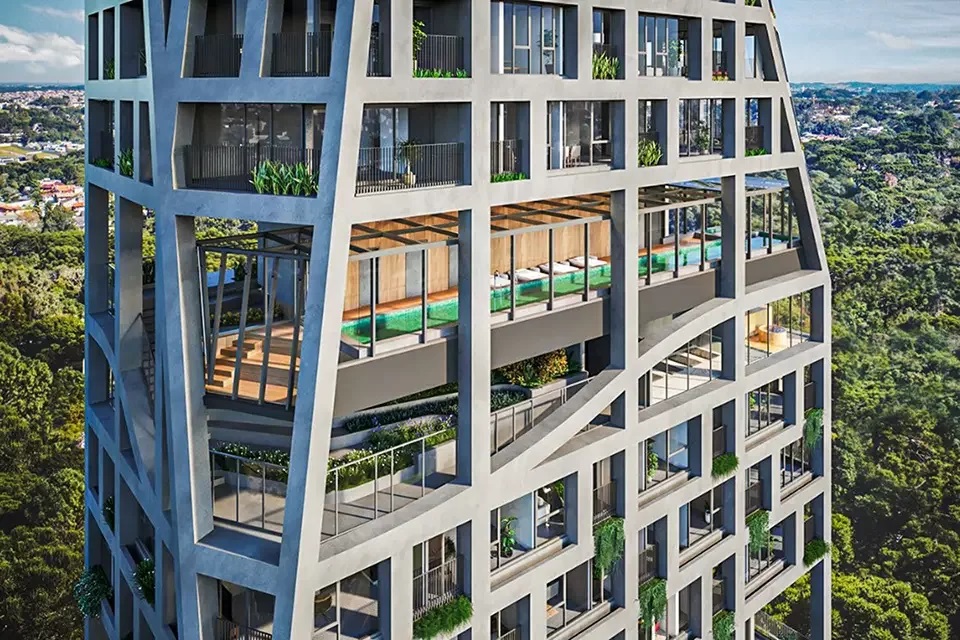In the opposite direction of the economic crisis, a real estate market segment sees great perspectives for expansion in Brazil.
The wellness building, a niche aimed at high-income consumers interested in associating housing, quality of life, and innovation for well-being, may represent a market of R$428 billion (US$80.4 billion) in Brazil alone.
The data is part of the Global Wellness Institute (GWI) survey. The study The Global Economy of Wellness AG7:
Brazil, conducted in partnership with AG7, the first wellness building developer in Brazil, shows that the country is among the 11 most relevant markets in the segment worldwide, appearing alongside nations such as Australia and the most promising in Latin America.

GWI’s CEO, Susie Ellis, explains that the international market is eyeing Brazil for new ventures as the conscious consumption market has picked up after the pandemic.
“Now, anyone who wants to tap into Brazil’s wellness economy and have a better understanding of where to position themselves vis-à-vis their peers and competition will be able to get this valuable data,” she points out.
MILLIONAIRES
The growth of the segment has an explanation. Last week, a report from Credit Suisse bank showed that Brazil “gained” 59,000 millionaires in 2021.
By the end of last year, there were 266,000 people with more than R$1 million in their bank account, compared to 207,000 in 2020.
The bank also estimates that this group will grow and reach 572 millionaires in 2026, out of the 87 million that should exist worldwide.
Therefore, says Andressa Gulin, head of innovation at AG7, this is a market in full development in the country.
“There is enormous versatility in the wellness ecosystem in Brazil, a country that exports health, beauty, and well-being references.
“For companies, numbers like these show how and where to better invest in the country, stimulating a sustainable, perennial productive chain with an impact on the population’s quality of life,” he says.
Worldwide, the wellness economy, which encompasses several services and products, such as beauty, health, and education, moved to R$22.8 trillion in 2020 and should reach R$36 trillion by 2025, growing at a rate of 10% a year.
“We spend, on average, 90% of our time inside built spaces, with a significant impact on the health and well-being of residents and workers.
“The concept of wellness real estate highlights the importance of real estate properties intentionally incorporating elements that encourage healthy lifestyle habits in their design, materials, construction, as well as in their amenities, services, and programming,” says Gulin.
Applying wellness principles to real estate requires that a residential project have elements designed to respect the occupant’s quality of life. Residents can expect structures developed to contribute to a healthy routine, creating rituals for disconnection and stress relief.
“Increasingly, Brazilians are looking for healthy lifestyle alternatives, not only in food, physical activity, beauty procedures, and products but also in housing, indispensable today for well-being and physical and mental health.
“Therefore, the sector’s expectation in the country is to have an exponential growth in the next years”, reinforces Gulin.
AWARDED
One of the architectural projects that counted with the incorporation of AG7 – the Ícaro Jardins do Graciosa, in the Cabral neighborhood, in Curitiba – recently won the “Rethinking The Future” international architecture award.
The incorporating company, which presents itself as a precursor of the concept of suspended houses in Brazil, expects to close the year with R$50 million in sales.
According to Alfredo Neto, AG7’s CEO, the expectation is for sustainable market growth.
“The revolution in the search for health and well-being has already begun and is a colossal industry that encompasses alternative medicine, spa treatments, exercise, tourism, cosmetics, and many others.
“GWI data shows that this concern is growing exponentially, including in the real estate market. People have already changed their lifestyles and started to prioritize a healthier and more balanced life”, he says.
CONCEPTS
“Building wellness is nothing more than the junction of the pillars of green building concepts, associated with the principles of healthy building, which designs the experiences of each space, plant, or area by holistically addressing the seven pillars of wellness that lead to the state of wellness,” explains Andressa Gulin.
“Together, these concepts focus on balancing leisure, well-being, and quality of life.
“This definition prioritizes providing positive stimuli through important pillars such as location, exclusivity, design, sustainability, services, and, especially, health,” explains AG7’s head of innovation.
The themes are now more present in the citizens’ daily lives in the agency’s leaders’ evaluations. Building wellness enterprises, for example, are designed to embrace the importance of quality of life.
In the common areas, there is the concern to bring environments that consider the individual’s well-being and connect, inspire and enhance this feeling, often by creating outdoor environments with lots of greenery, for example.
With information from Correio Braziliense

